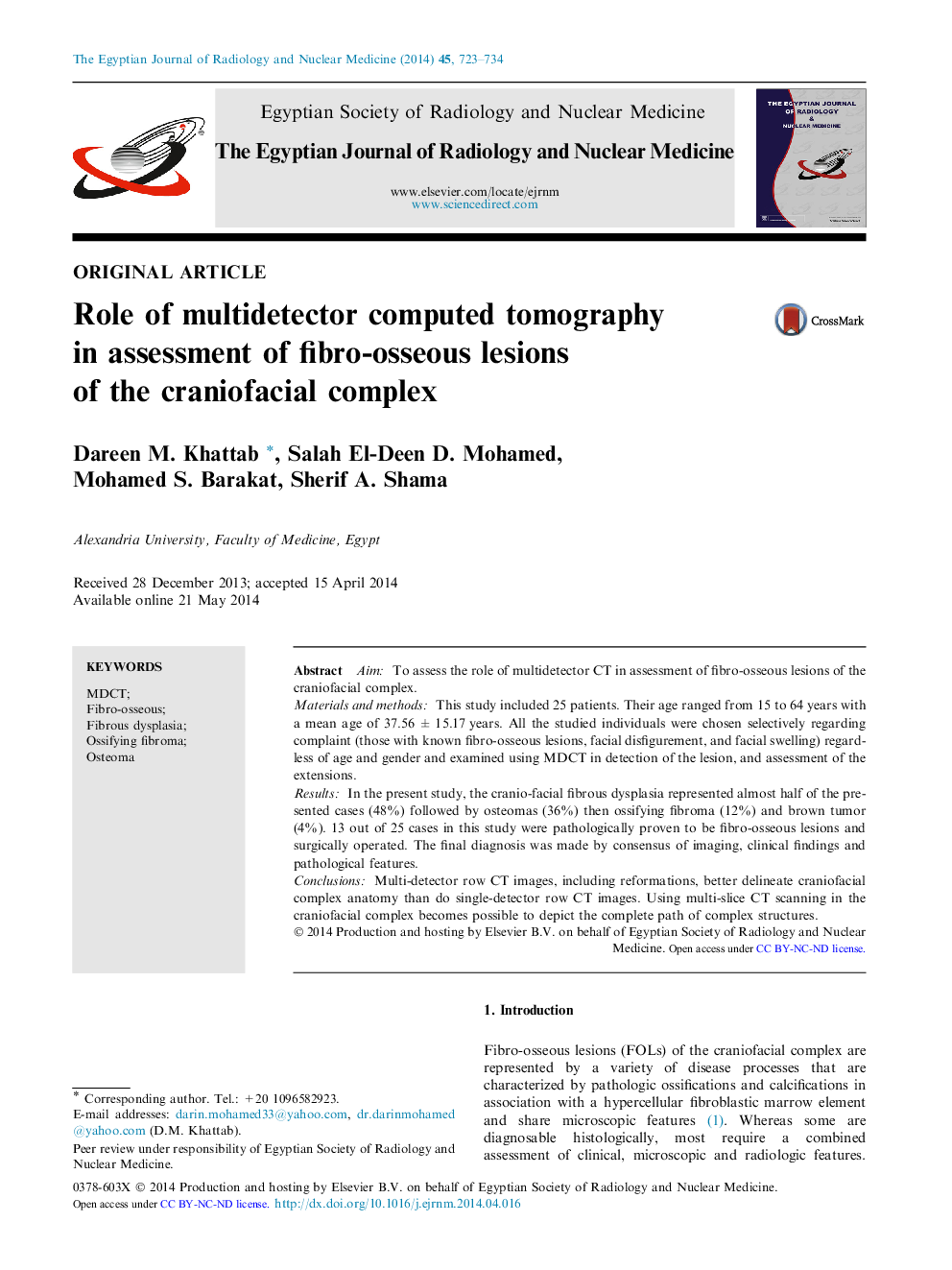| Article ID | Journal | Published Year | Pages | File Type |
|---|---|---|---|---|
| 4224126 | The Egyptian Journal of Radiology and Nuclear Medicine | 2014 | 12 Pages |
AimTo assess the role of multidetector CT in assessment of fibro-osseous lesions of the craniofacial complex.Materials and methodsThis study included 25 patients. Their age ranged from 15 to 64 years with a mean age of 37.56 ± 15.17 years. All the studied individuals were chosen selectively regarding complaint (those with known fibro-osseous lesions, facial disfigurement, and facial swelling) regardless of age and gender and examined using MDCT in detection of the lesion, and assessment of the extensions.ResultsIn the present study, the cranio-facial fibrous dysplasia represented almost half of the presented cases (48%) followed by osteomas (36%) then ossifying fibroma (12%) and brown tumor (4%). 13 out of 25 cases in this study were pathologically proven to be fibro-osseous lesions and surgically operated. The final diagnosis was made by consensus of imaging, clinical findings and pathological features.ConclusionsMulti-detector row CT images, including reformations, better delineate craniofacial complex anatomy than do single-detector row CT images. Using multi-slice CT scanning in the craniofacial complex becomes possible to depict the complete path of complex structures.
